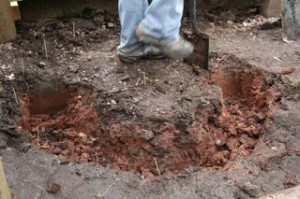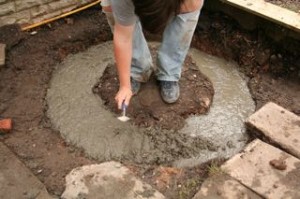I’m not sure exactly what I was expecting, but the fact that I took shower gel and a mobile phone charger probably gives a few clues away. Taste the Wild’s ‘wild food weekend’ was, well, a bit wilder than I thought. That’s not a bad thing though – I think the lack of a hot shower, a flushing loo (composting is better anyway), and electricity actually helps urbanites like me to get out of city-mode pretty instantly, which is the point really.
 Taste the Wild is run by husband and wife team, Chris and Rose. Chris is a designer by training, and chef by passion, Rose a wood sculptor (with a chainsaw no less!). They own an 18 acre wood in Yorkshire, which Chris and Rose have nurtured like a newborn since taking it over 5 years ago – they’ve started to coppice, dig ponds, thin out dense areas (planted by the military), and encourage young broadleaf trees to develop the biodiversity that it once had. They’ve created a clearing where we spend much of the weekend, complete with tipi’s and an amazing bush kitchen, the centrepiece of which is a 15 foot handmade table for all the kitchen preparations (chef’s do like their space).
Taste the Wild is run by husband and wife team, Chris and Rose. Chris is a designer by training, and chef by passion, Rose a wood sculptor (with a chainsaw no less!). They own an 18 acre wood in Yorkshire, which Chris and Rose have nurtured like a newborn since taking it over 5 years ago – they’ve started to coppice, dig ponds, thin out dense areas (planted by the military), and encourage young broadleaf trees to develop the biodiversity that it once had. They’ve created a clearing where we spend much of the weekend, complete with tipi’s and an amazing bush kitchen, the centrepiece of which is a 15 foot handmade table for all the kitchen preparations (chef’s do like their space).
Friday evening was a laid back affair, a hearty beef stew, and chats round the camp fire with Chris and the other four foragers-in-training. Saturday morning begins at a respectable 9am (after porridge prepared over an open fire), and I discover that my instincts were correct, the mushrooms are out in force, and by 11am on our first wild food walk, we’d collected enough edibles for a filling starter. 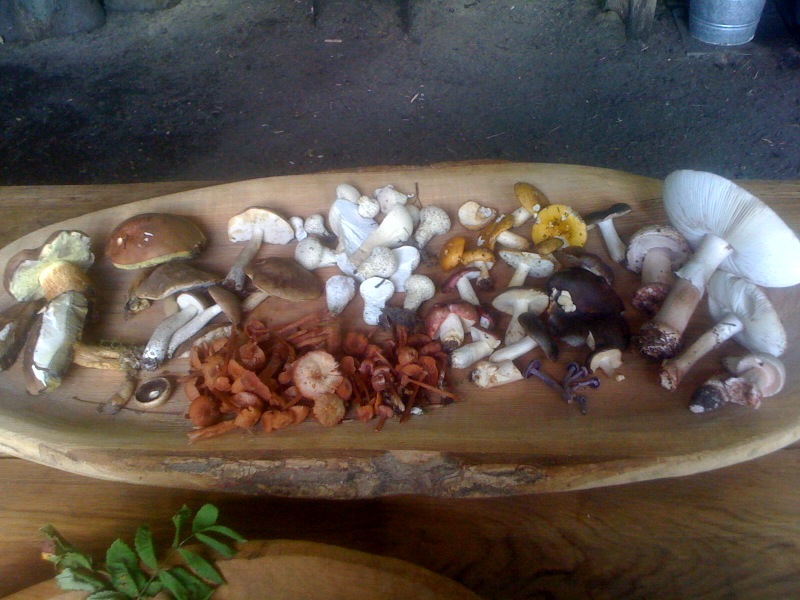 Mushrooms are enthralling, and despite Chris trying to teach us about wood avens, chickweed, and sheeps sorrel, not much of it sunk in as our eyes surveyed the forest floor for little humps of joy (Bay Bolete’s) and of pain (Fly Agaric). We paid much more attention on our second foray though as Chris tactfully ignored the mushrooms, and shared his impressive knowledge of well over 20 edible plants. I was like a kid in a sweet shop, excited by what culinary delights these weird green things could offer, and often trailing behind the group taking copious notes in my moleskine.
Mushrooms are enthralling, and despite Chris trying to teach us about wood avens, chickweed, and sheeps sorrel, not much of it sunk in as our eyes surveyed the forest floor for little humps of joy (Bay Bolete’s) and of pain (Fly Agaric). We paid much more attention on our second foray though as Chris tactfully ignored the mushrooms, and shared his impressive knowledge of well over 20 edible plants. I was like a kid in a sweet shop, excited by what culinary delights these weird green things could offer, and often trailing behind the group taking copious notes in my moleskine.
After lunch, and a brief lesson in skinning a rabbit, we were put to the test, and sent out with a woodland shopping list to find our dinner. We all had moderate success, but I think it’s the slowest i’ve ever walked in my life – eyes fixated to the ground, mind daring me to try things that looked vaguely like what we’d identified earlier. Still, at least I could find my way back by following the puddles of bitter-spit. As the night drew in, Chris expertly pulled together a wild food feast – wild mushrooms on a garlic crouton with sorrel salad, followed by pan-fried rabbit with mash and wilted wild greens. The wild berry compote had to be saved for breakfast we were so full.
On Sunday, Rose came into her own as we concentrated on pickling, processing, and preserving all that woodland goodness. We made delicious dandelion and burdock, tangy corn mint pickle, and surprisingly delightful rowan jelly (*must make this again, Birmingham is full of rowan trees*), and sampled many of Rose’s concoctions – fortunately many of them contained a good amount of tipple too! My personal favourite was beech leaf noyau, a mixture of young beech leaves, gin, sugar, and brandy – a pure taste of the woods, and a nice kick to boot. Sunday lunch, and the finale of the weekend, was smoked trout (which we’d ponassed ourselves) and flat breads (baked in the earth oven), followed by a beautiful meadowsweet panna cotta (made by yours truly).
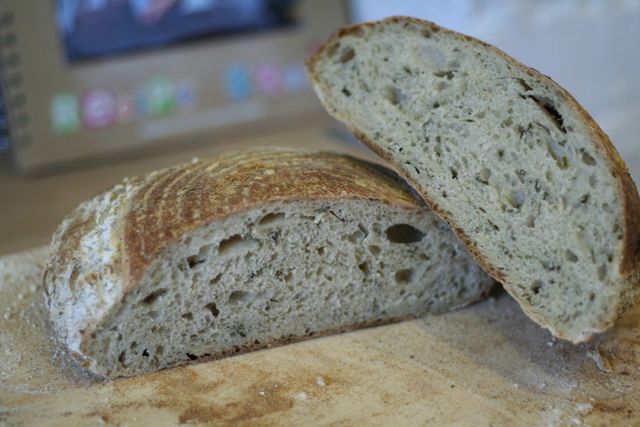 I left the weekend with a fistful of herbs and a headful of ideas, and have already made my first wild bread, melilot sourdough, which tasted great, and have a meadowsweet brioche planned for later this week. This stuff can definitely be applied in the big city, I even stepped over a bunch of wood avens on my front step as I arrived home, so watch this space for more wild food and urban foraging action, right here in Birmingham.
I left the weekend with a fistful of herbs and a headful of ideas, and have already made my first wild bread, melilot sourdough, which tasted great, and have a meadowsweet brioche planned for later this week. This stuff can definitely be applied in the big city, I even stepped over a bunch of wood avens on my front step as I arrived home, so watch this space for more wild food and urban foraging action, right here in Birmingham.
Do check out Taste the Wild, as they run a plethora of other courses too – bushcraft, survival, mushroom days, coastal foraging etc, and next Spring they’ll be running a build-an-earth-oven weekend. Who knows, there might even be a loaf/taste wild-bread collaboration in the future – watch this space!
Tom.
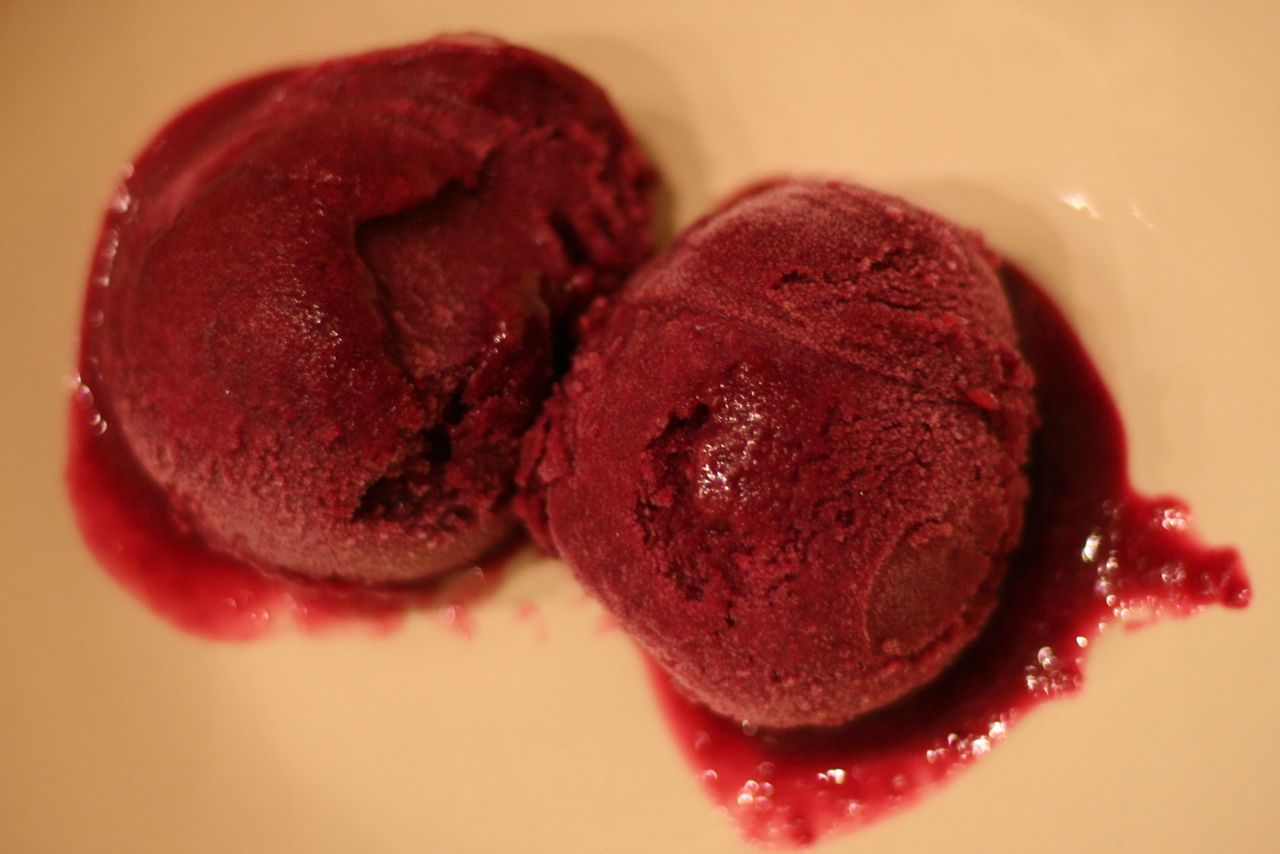 It’s a great year for plums. They’re literally dripping off the trees, and bumper harvests are even being left to rot on the trees in kent. If plums are booming, that’s certainly also true for their cousins, damsons and sloes, as I discovered on a recent sojourn through the country lanes of Kings Norton. Fortunately I had come prepared with tupperware galore, so filled my boots with plenty of both. The sloes came in handy for my ‘very early sloe gin’, but I was left with a pound or so of damsons – too many to eat, but not enough to make the effort of jam-making worthwhile. Sorbet it had to be then. Many sorbet recipes call for egg white to help keep the smooth texture, but I thought I’d experiment without. It takes a while to complete, so plan to be home for a good 3 hours. If you want a less-involved sorbet, the ‘quick plum sorbet’ from Jamie at Home is good, and would work equally well with damsons. Anyway, here’s what I did…
It’s a great year for plums. They’re literally dripping off the trees, and bumper harvests are even being left to rot on the trees in kent. If plums are booming, that’s certainly also true for their cousins, damsons and sloes, as I discovered on a recent sojourn through the country lanes of Kings Norton. Fortunately I had come prepared with tupperware galore, so filled my boots with plenty of both. The sloes came in handy for my ‘very early sloe gin’, but I was left with a pound or so of damsons – too many to eat, but not enough to make the effort of jam-making worthwhile. Sorbet it had to be then. Many sorbet recipes call for egg white to help keep the smooth texture, but I thought I’d experiment without. It takes a while to complete, so plan to be home for a good 3 hours. If you want a less-involved sorbet, the ‘quick plum sorbet’ from Jamie at Home is good, and would work equally well with damsons. Anyway, here’s what I did…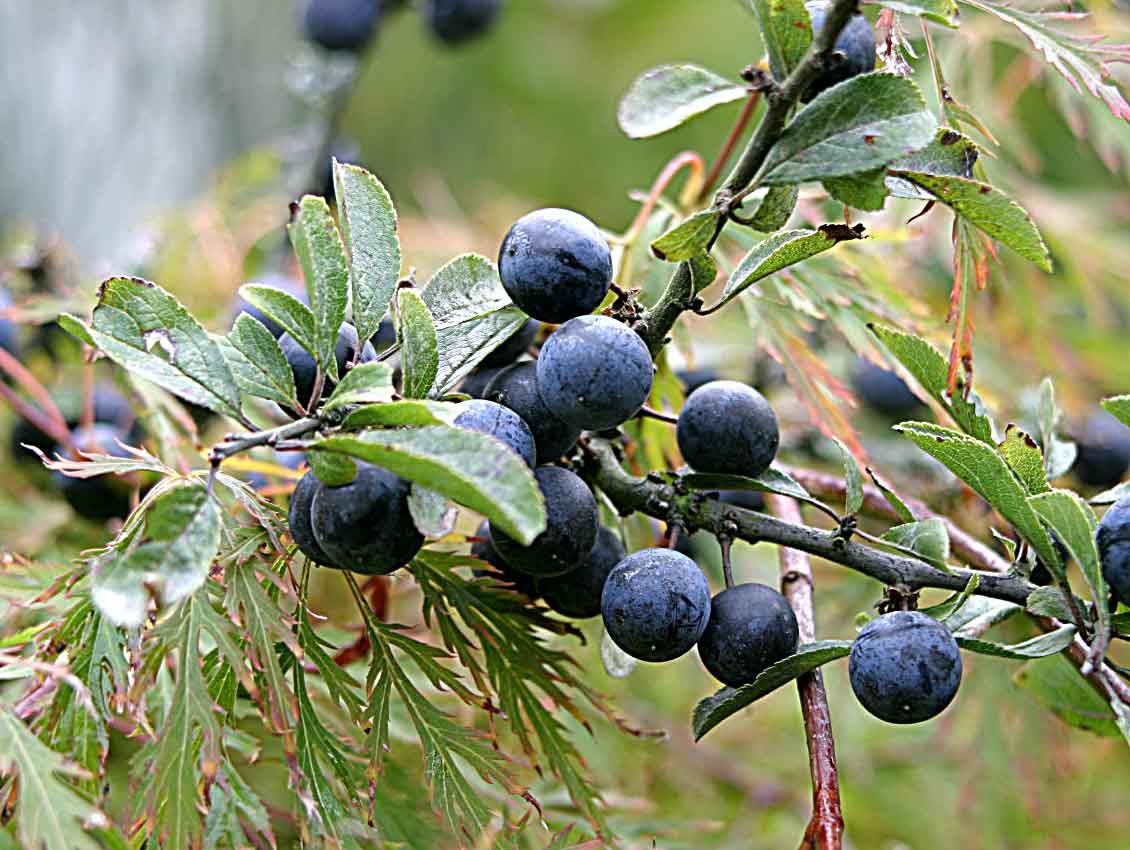 It was only after I got back from a long walk out to The Peacock, having gathered a box-full of sloes and with a thirst for G&T, that I discovered in Richard Maybe’s ‘Food for Free’, sloes for making sloe gin are best “after the first frost”. Oh well, I wouldn’t want to see them go to waste, so here is what I did with them…
It was only after I got back from a long walk out to The Peacock, having gathered a box-full of sloes and with a thirst for G&T, that I discovered in Richard Maybe’s ‘Food for Free’, sloes for making sloe gin are best “after the first frost”. Oh well, I wouldn’t want to see them go to waste, so here is what I did with them…
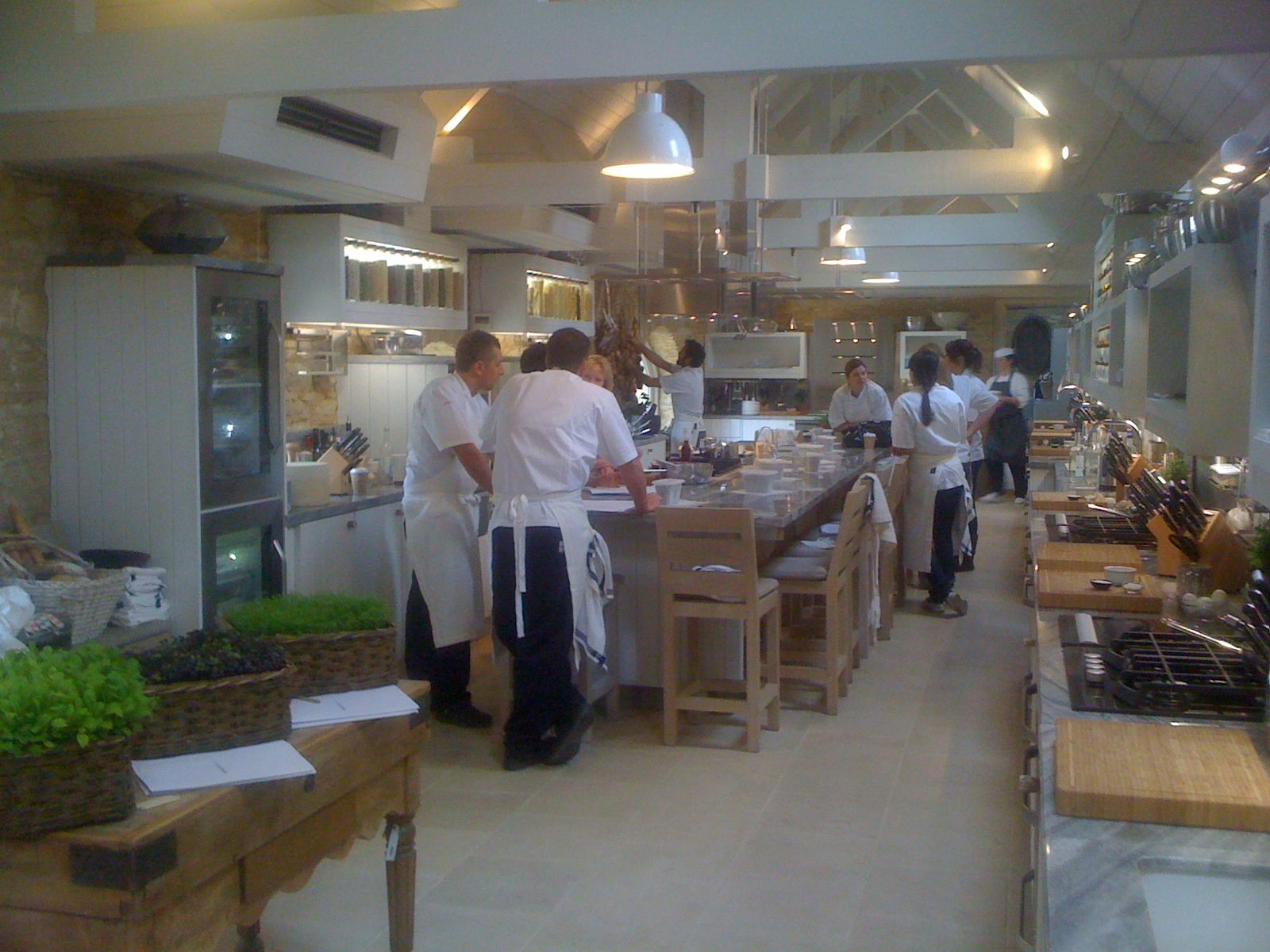 Before any big-media even got their quills inked to review this new foodie destination, Loaf had the privilege to preview the hotly-anticipated Daylesford Organic Cookery School. Through the generosity of an old Uni chum, Loaf managed to wangle itself an invitation to the first trial day of the brand-spanking-new cookery school.
Before any big-media even got their quills inked to review this new foodie destination, Loaf had the privilege to preview the hotly-anticipated Daylesford Organic Cookery School. Through the generosity of an old Uni chum, Loaf managed to wangle itself an invitation to the first trial day of the brand-spanking-new cookery school. Taste the Wild is run by husband and wife team, Chris and Rose. Chris is a designer by training, and chef by passion, Rose a wood sculptor (with a chainsaw no less!). They own an 18 acre wood in Yorkshire, which Chris and Rose have nurtured like a newborn since taking it over 5 years ago – they’ve started to coppice, dig ponds, thin out dense areas (planted by the military), and encourage young broadleaf trees to develop the biodiversity that it once had. They’ve created a clearing where we spend much of the weekend, complete with tipi’s and an amazing bush kitchen, the centrepiece of which is a 15 foot handmade table for all the kitchen preparations (chef’s do like their space).
Taste the Wild is run by husband and wife team, Chris and Rose. Chris is a designer by training, and chef by passion, Rose a wood sculptor (with a chainsaw no less!). They own an 18 acre wood in Yorkshire, which Chris and Rose have nurtured like a newborn since taking it over 5 years ago – they’ve started to coppice, dig ponds, thin out dense areas (planted by the military), and encourage young broadleaf trees to develop the biodiversity that it once had. They’ve created a clearing where we spend much of the weekend, complete with tipi’s and an amazing bush kitchen, the centrepiece of which is a 15 foot handmade table for all the kitchen preparations (chef’s do like their space). Mushrooms are enthralling, and despite Chris trying to teach us about wood avens, chickweed, and sheeps sorrel, not much of it sunk in as our eyes surveyed the forest floor for little humps of joy (Bay Bolete’s) and of pain (Fly Agaric). We paid much more attention on our second foray though as Chris tactfully ignored the mushrooms, and shared his impressive knowledge of well over 20 edible plants. I was like a kid in a sweet shop, excited by what culinary delights these weird green things could offer, and often trailing behind the group taking copious notes in my moleskine.
Mushrooms are enthralling, and despite Chris trying to teach us about wood avens, chickweed, and sheeps sorrel, not much of it sunk in as our eyes surveyed the forest floor for little humps of joy (Bay Bolete’s) and of pain (Fly Agaric). We paid much more attention on our second foray though as Chris tactfully ignored the mushrooms, and shared his impressive knowledge of well over 20 edible plants. I was like a kid in a sweet shop, excited by what culinary delights these weird green things could offer, and often trailing behind the group taking copious notes in my moleskine. I left the weekend with a fistful of herbs and a headful of ideas, and have already made my first wild bread, melilot sourdough, which tasted great, and have a meadowsweet brioche planned for later this week. This stuff can definitely be applied in the big city, I even stepped over a bunch of wood avens on my front step as I arrived home, so watch this space for more wild food and urban foraging action, right here in Birmingham.
I left the weekend with a fistful of herbs and a headful of ideas, and have already made my first wild bread, melilot sourdough, which tasted great, and have a meadowsweet brioche planned for later this week. This stuff can definitely be applied in the big city, I even stepped over a bunch of wood avens on my front step as I arrived home, so watch this space for more wild food and urban foraging action, right here in Birmingham.


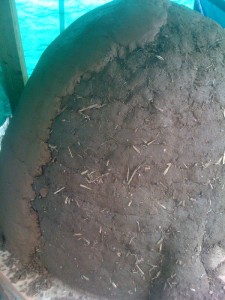

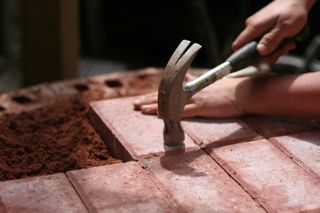
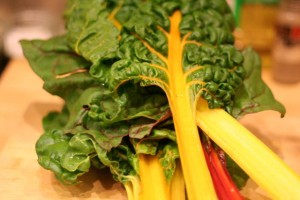 I nearly came to blows over chard today. My colleague insisting it was disgusting and that you might as well “eat mud”; me waxing lyrical about the virtues of chard stalks (“the worst bit!”) fried in sage butter.
I nearly came to blows over chard today. My colleague insisting it was disgusting and that you might as well “eat mud”; me waxing lyrical about the virtues of chard stalks (“the worst bit!”) fried in sage butter.
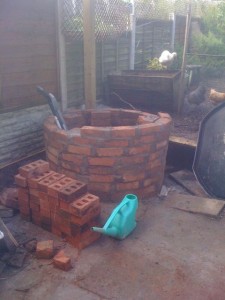
 Months of anticipation and now only a few hours to go –
Months of anticipation and now only a few hours to go – 